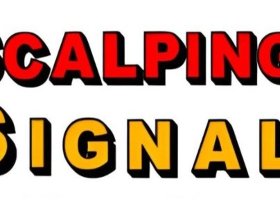There is no trade call for the session or tier one data on the calendar for the London session. The main event for the day will come in NY with ECB’s Draghi who is due to testify on monetary policy before the European Parliament’s Economic and Monetary Affairs Committee, in Brussels. Today is also a US bank holiday, so markets may be thinner than usual. As always on Mondays below is my prepared currency update so you can familiarize with the situation in the markets.
Currency Update:
USD: NFP for Jan saw 151,000 jobs added, versus expectations for 190,000. The unemployment rate fell 1 tenth to 4.9% and the participation rate rose 1 tenth to 62.7%. Average hourly earnings jumped 0.5% for the month, however the y/y figure held steady at 2.5%. Rates were kept on hold in January but the statement struck a slightly more cautious tone, noting low inflation and that global economic developments will require monitoring. The greenback remains the strongest currency fundamentally given that the Fed raised rates in December and intends to continue tightening during 2016. Inflation however remains a point of concern and will be the most likely factor to slow the path of hikes. Core PCE, as of February 1, is at 1.4%, still well below the Fed’s 2% target.
EUR: At the January 21 ECB meeting, Draghi made dovish comments, saying that monetary policy will be reviewed at the March meeting due to further deterioration in inflation expectations and other financial uncertainty. The hints of further easing caused a 140-pip drop in EURUSD. The euro continues to be one of the weaker major currencies fundamentally due to the active easing cycle by the ECB. January Flash CPI for the Eurozone, released on January 29, came in in-line at 0.4% y/y for the headline and slightly better than expected for the core at 1%, versus 0.9%. The euro currently holds a strong correlation with risk-off sentiment, causing it to appreciate on safe-haven flows.
GBP: The Bank of England vote split changed back to 9-0 with McCafferty no longer voting for a hike. Growth forecasts for 2016 and 2017 were downgraded while inflation is expected to remain below 1% til the end of the year. The referendum regarding Britain’s exit from the EU contributes to bearish sentiment on the currency due to political uncertainty, however recent EU proposals have allayed some of the bearish referendum sentiment. The December CPI data, released on January 19, beat analysts’ expectations with the headline inching up 0.1%, lifting annual inflation to 0.2%, it’s third consecutive increase. The core was firmer at 0.3%, enough to bring the annual rate up to 1.4% from 1.2%. Labor data on January 20 showed Claimant Count Unemployment for December falling 4.3K. The ILO unemployment rate ticked down to 5.1% from 5.2%, however wages slightly disappointed printing at just 2.0% on the year. The first estimate GDP print for Q4, released on January 28, came in as expected for both the Q/Q and Y/Y figures.
AUD: On February 2, the RBA left it’s cash rate unchanged as was expected. The accompanying rate statement was fairly upbeat and signaled growing confidence in a domestic recovery, while low inflation still remains a concern and could provide scope for further easing moving forward if warranted. CPI for the fourth quarter beat expectations overall with Trimmed Mean y/y remaining at 2.1%, which is within the Banks’s target of 2-3%. The Australian dollar remains a neutral currency which will be guided by direction in key commodity assets. The employment situation in Australia has been excellent in the latter half of 2015, despite a slowdown in the mining sector. The most recent jobs release for December showed -1,000 jobs lost which is the largest decline in 8 months.
NZD: The RBNZ kept rates on hold in January but struck a dovish tone saying that the NZD needs to move lower and further easing is a possibility. Westpac forecast a cut to 2.25% at the March meeting. CPI for Q4 was poor showing deflation of -0.5% for the 3-month period and a rise of only 0.1% throughout all of 2015. This increases chances of further RBNZ cuts. The RBNZ cut rates for the fourth time in 2015 at the December 10 meeting but moved to a more neutral stance in their statement which supported Kiwi. Dairy prices will be an important factor for the Kiwi going forward. On February 3, the Quarterly Employment Change printed at 0.9% versus the 0.8% consensus, while the Unemployment Rate tumbled to 5.3% smashing expectations of a 0.1% rise to 6.1%, and the lowest since the first quarter of 2009.
CAD: January labor market was weaker than expected; employment declined 5,700, its second decrease in the last three months, and missing consensus of a 6,000 gain. With the participation rate unchanged at 65.9%, the jobless rate ticked up to 7.2%, on par with its highest mark since March 2013.The BOC kept rates on hold at the January 20 meeting, which surprised some analysts. The tone of the statement and Poloz’s press conference was less dovish than anticipated, which is in line with Poloz and the BOC’s generally optimistic stance. The severe depreciation of the CAD due to falls in oil means there is less urgency to cut rates, as the lower CAD will boost inflation by making CAD-denominated goods more attractive to overseas buyers. Further, it appears that the Canadian government may introduce fiscal stimulus measures in the next budget which allows the BOC to refrain from action for now. CAD will continue to be directed by the price of WTI.
JPY: The Bank of Japan announced negative interest rates of -0.10% on January 29 but left the QQE program unchanged. The inflation target was pushed back to end 2017 and the Bank remains prepared to ease further if necessary. The BOJ are watching CPI excluding food & energy to gauge underlying inflation trend. The BOJ’s own measure of underlying inflation is at 1.2%, with a target of 2%.
CHF: The franc is fundamentally a weak currency given the SNB’s negative interest rates, however it can suddenly rally on safe-haven flows. The SNB regularly recite that the franc is overvalued and they are prepared to intervene to weaken the currency. The franc’s direction is difficult to predict due to regular intervention by the SNB.



